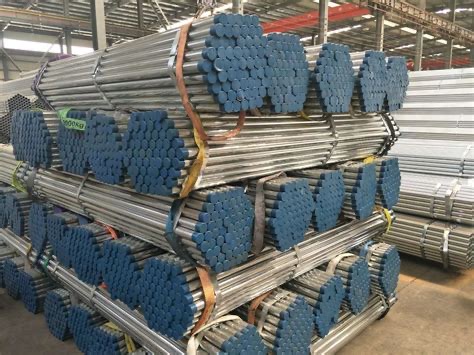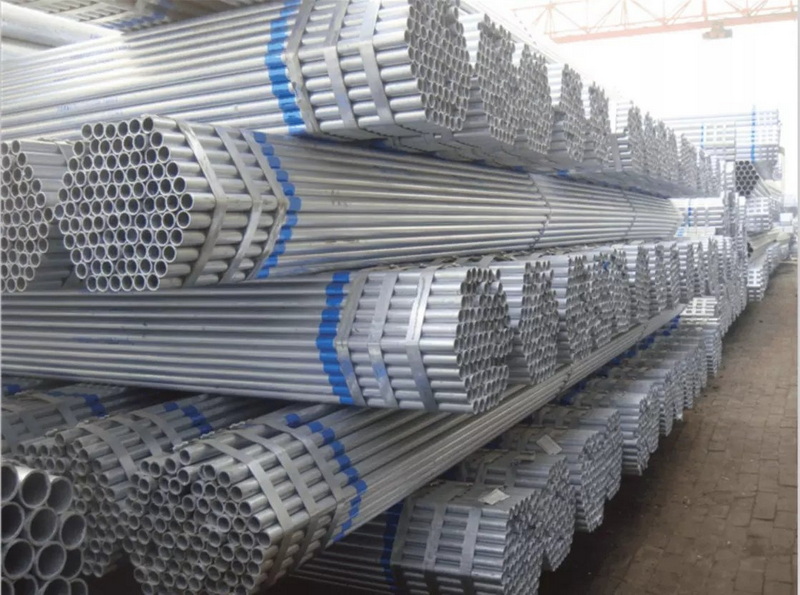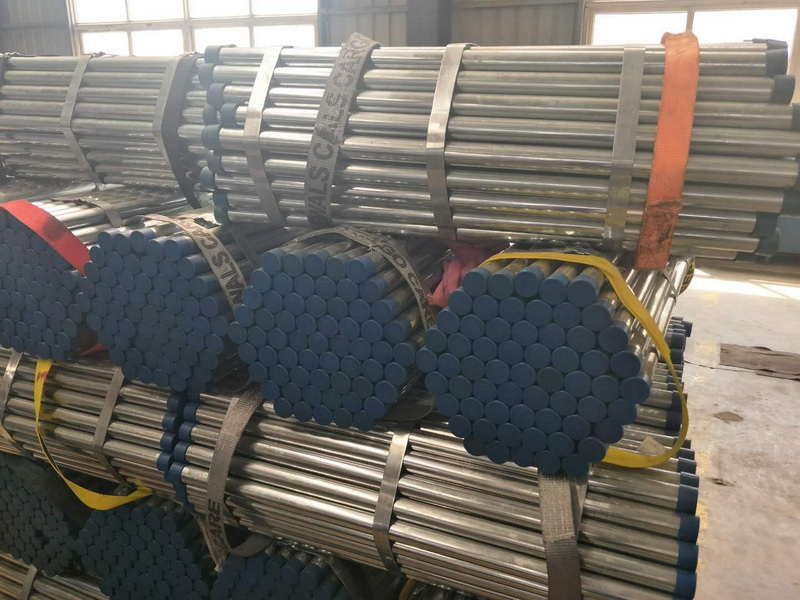Content Menu
● Introduction
● What Is a BS 1139 Standard Scaffolding Tube?
● Key Specifications of BS 1139 Tubes
>> 1. Dimensions and Tolerances
>> 2. Material and Surface Treatment
>> 3. Mechanical Properties
>> 4. Marking and Traceability
● How BS 1139 Tubes Differ from Other Scaffolding Tubes
>> 1. Scope and Coverage
>> 2. Dimensional and Material Requirements
>> 3. Mechanical and Structural Performance
>> 4. Regulatory and Safety Compliance
>> 5. Comparison with EN 39 and Other Standards
● Applications and Advantages of BS 1139 Tubes
>> 1. Construction and Industrial Projects
>> 2. Safety and Reliability
>> 3. Durability and Longevity
>> 4. International Acceptance
>> 5. Adaptability and System Integration
>> 6. Environmental and Economic Efficiency
● Quality Assurance, Testing, and Marking
>> 1. Factory and Third-Party Testing
>> 2. Marking and Traceability
>> 3. Inspection and Maintenance
● BS 1139 Standard Scaffolding Tube in Modern Construction
>> 1. International Projects and Multinational Teams
>> 2. Urban and High-Rise Construction
>> 3. Industrial and Petrochemical Facilities
>> 4. Renovation and Restoration
● Environmental and Economic Considerations
>> 1. Sustainability
>> 2. Cost-Efficiency
● Conclusion
● FAQ
>> 1. What is the standard size of a BS 1139 scaffolding tube?
>> 2. Are BS 1139 tubes always galvanized?
>> 3. How does BS 1139 differ from EN 39?
>> 4. What kind of projects require BS 1139 standard scaffolding tubes?
>> 5. How are BS 1139 tubes tested and certified?
Scaffolding is a cornerstone of modern construction, providing safe, temporary platforms for workers and materials at height. Among the many standards governing scaffolding components, the BS 1139 standard scaffolding tube stands out for its rigorous specifications and global recognition.

Introduction
When safety, reliability, and compatibility are paramount, the choice of scaffolding tube matters. The BS 1139 standard scaffolding tube is widely used in the UK, Commonwealth countries, and international projects for its strict adherence to quality and performance. Understanding what makes BS 1139 tubes unique helps project managers, engineers, and contractors ensure compliance and safety on site.
What Is a BS 1139 Standard Scaffolding Tube?
The BS 1139 standard is a British Standard that specifies the requirements for scaffolding tubes, fittings, and couplers used in construction and industrial applications. It covers not only the tubes themselves but also the associated fittings, ensuring a holistic approach to scaffolding safety and compatibility.
Key Points:
- Published by the British Standards Institution (BSI)
- Applies to steel tubes (often hot-dip galvanized for corrosion resistance)
- Covers dimensions, material properties, mechanical strength, and testing requirements
- Includes associated couplers, fittings, and boards for a complete scaffolding system
Key Specifications of BS 1139 Tubes
1. Dimensions and Tolerances
- Outer Diameter: 48.3 mm (±0.5 mm), including coating
- Wall Thickness: 3.2 mm, 3.6 mm, 3.8 mm, or 4.0 mm (minimum 4.0 mm for some applications)
- Length: Commonly supplied in 6.4 m (21 ft), but other lengths (e.g., 0.3m to 6m) are available
- Straightness: Deviation from straight must not exceed 3 mm per meter, and total deflection must not exceed 0.002 times the tube's length
2. Material and Surface Treatment
- Material: Steel, typically mild steel or higher-strength steel grades such as Q235, S235, or Q345
- Surface: Hot-dip galvanized is preferred for corrosion resistance, but black (untreated) and painted tubes exist
- Corrosion Resistance: Galvanized tubes are standard for long-term and outdoor use
3. Mechanical Properties
- Tensile Strength: Must meet or exceed specified values to ensure load-bearing capacity
- Elongation and Hardness: Defined to prevent brittle failure and ensure ductility
- Testing: Tubes undergo rigorous testing for strength, elongation, and coating effectiveness
4. Marking and Traceability
- Each tube must be marked with the manufacturer's name, production date, and standard reference (e.g., “BS 1139”)

How BS 1139 Tubes Differ from Other Scaffolding Tubes
1. Scope and Coverage
| Feature | BS 1139 Standard Scaffolding Tube | Other Scaffolding Tubes (e.g., EN 39, Local Standards) |
| Standard Type | British Standard (BS) | European (EN), National, or Manufacturer-specific |
| Scope | Tubes, couplers, fittings, and boards | Often tubes only (e.g., EN 39), sometimes fittings |
| System Compatibility | Ensures full-system compatibility | May lack system-wide requirements |
| International Use | UK, Commonwealth, Middle East, Asia, Africa | EN 39: EU, some global; others: regional |
2. Dimensional and Material Requirements
- Diameter and Wall Thickness: BS 1139 tubes have a fixed outer diameter of 48.3 mm and a range of wall thicknesses (up to 4.0 mm), aligning with international best practices but with strict tolerances.
- Material Quality: Requires steel with specific mechanical properties, ensuring high load capacity and safety.
- Surface Treatment: Hot-dip galvanizing is standard for corrosion resistance; older or cheaper tubes may be painted or untreated.
3. Mechanical and Structural Performance
- Strength and Durability: BS 1139 tubes are tested for hardness, tensile strength, and elongation, ensuring they can withstand heavy construction loads and dynamic stresses.
- Straightness and Tolerances: Tight controls on straightness and ovality prevent misalignment and ensure secure connections.
- Compatibility: Designed for use with BS 1139-compliant couplers and fittings, reducing the risk of mismatched or unsafe assemblies.
4. Regulatory and Safety Compliance
- Global Recognition: BS 1139 is widely accepted in international projects, especially in oil & gas, petrochemical, and infrastructure sectors.
- Testing and Certification: Includes requirements for third-party testing, certification, and traceability, enhancing site safety and accountability.
5. Comparison with EN 39 and Other Standards
| Aspect | BS 1139 Standard Scaffolding Tube | EN 39 Tube | Other Tubes (e.g., Local) |
| Scope | Tubes, fittings, couplers | Tubes only | Varies |
| Wall Thickness | 3.2–4.0 mm (often 4.0 mm min) | 3.2 mm or 4.0 mm | Varies |
| Material Grade | Mild steel or higher | S235/S355 | Varies |
| Surface Treatment | Hot-dip galvanized, painted, black | Hot-dip galvanized | May be untreated |
| Mechanical Testing | Yes (tensile, elongation, etc.) | Yes | Not always |
| Marking | Required | Required | Not always |
| International Use | UK, Commonwealth, global | EU, global | Regional |
Applications and Advantages of BS 1139 Tubes
1. Construction and Industrial Projects
- Used in tube-and-fitting scaffolding systems for building, maintenance, and industrial access.
- Preferred for projects requiring strict compliance, such as oil & gas, infrastructure, and high-rise construction.
2. Safety and Reliability
- Ensures high structural integrity, reducing the risk of collapse or failure.
- Compatible with a wide range of BS 1139-compliant couplers, boards, and accessories for complete system safety.
3. Durability and Longevity
- Hot-dip galvanizing provides excellent corrosion resistance, extending service life even in harsh environments.
- Strict quality control and traceability minimize the risk of defects.
4. International Acceptance
- Recognized by major contractors and regulatory bodies worldwide, facilitating cross-border projects and multinational collaborations.
5. Adaptability and System Integration
- BS 1139 standard scaffolding tube is designed to integrate seamlessly with other system components, such as right-angle couplers, swivel couplers, and scaffold boards, all of which are manufactured to the same standard. This ensures that the entire scaffolding system, not just the tubes, meets high safety and performance criteria.
6. Environmental and Economic Efficiency
- Due to their durability and corrosion resistance, BS 1139 tubes require less frequent replacement, reducing long-term costs and environmental impact.
Quality Assurance, Testing, and Marking
1. Factory and Third-Party Testing
- Manufacturers conduct internal quality tests (e.g., steel coil raw material test, finished tube test).
- Third-party certification ensures compliance with both BS 1139 and industry-specific standards (e.g., oil & gas sector).
2. Marking and Traceability
- Each tube is marked with the manufacturer's name, production date, and “BS 1139” standard for easy identification and traceability on site.
3. Inspection and Maintenance
- Regular inspection for deformation, corrosion, or wear is required to maintain safety and compliance.
- Any tube that shows signs of excessive wear, rust, or deformation should be removed from service and replaced.
BS 1139 Standard Scaffolding Tube in Modern Construction
The global construction industry is increasingly prioritizing safety, quality, and sustainability. The BS 1139 standard scaffolding tube aligns perfectly with these trends:
1. International Projects and Multinational Teams
- BS 1139 tubes are often specified in international contracts, especially for projects involving multiple stakeholders from different countries. Their universal acceptance streamlines procurement and ensures that all parties adhere to a recognized safety benchmark.
2. Urban and High-Rise Construction
- In dense urban environments and high-rise buildings, the reliability and strict tolerances of BS 1139 tubes help prevent accidents and ensure that scaffolding remains stable under heavy loads and challenging conditions.
3. Industrial and Petrochemical Facilities
- These sectors demand the highest safety standards due to the hazardous nature of the work. BS 1139-compliant scaffolding is often a contractual requirement for access and maintenance work in refineries, chemical plants, and power stations.
4. Renovation and Restoration
- The adaptability and precision of BS 1139 tubes make them ideal for complex renovation projects, especially where scaffolding must conform to irregular or historic structures.
Environmental and Economic Considerations
1. Sustainability
- The hot-dip galvanizing process used for most BS 1139 standard scaffolding tubes extends their lifespan, reducing the need for frequent replacement and minimizing waste.
- Steel is highly recyclable, and many BS 1139 tubes are made from recycled materials, supporting circular economy initiatives in construction.
2. Cost-Efficiency
- While BS 1139 tubes may have a higher upfront cost compared to non-standard or locally produced tubes, their durability, safety, and lower maintenance needs result in significant long-term savings.
- The global recognition of the BS 1139 standard scaffolding tube also means better resale value and easier sourcing for future projects.
Conclusion
The BS 1139 standard scaffolding tube is distinguished by its strict dimensional, material, and performance requirements, ensuring safety, compatibility, and durability in demanding construction environments. Unlike many other scaffolding tubes, BS 1139 tubes are part of a holistic system that includes fittings and boards, all tested and certified for structural integrity. Their global recognition, especially in multinational and high-risk projects, makes them a preferred choice for contractors and engineers committed to safety and reliability. When selecting scaffolding components, choosing BS 1139-compliant tubes ensures not only regulatory compliance but also peace of mind on site.

FAQ
1. What is the standard size of a BS 1139 scaffolding tube?
BS 1139 standard scaffolding tubes have an outer diameter of 48.3 mm (±0.5 mm) and wall thicknesses typically ranging from 3.2 mm to 4.0 mm.
2. Are BS 1139 tubes always galvanized?
While hot-dip galvanizing is common for corrosion resistance, BS 1139 tubes can also be painted or supplied black (untreated). Galvanized tubes are preferred for outdoor and long-term use.
3. How does BS 1139 differ from EN 39?
BS 1139 covers not only tubes but also couplers, fittings, and boards, ensuring full system compatibility. EN 39 focuses mainly on tube specifications. BS 1139 is widely used in the UK and internationally, while EN 39 is dominant in the EU.
4. What kind of projects require BS 1139 standard scaffolding tubes?
BS 1139 tubes are required for projects needing strict safety compliance, such as oil & gas, infrastructure, high-rise buildings, and multinational construction sites.
5. How are BS 1139 tubes tested and certified?
Tubes undergo factory and third-party testing for mechanical properties, wall thickness, and coating effectiveness. Each tube is marked for traceability and compliance with the BS 1139 standard.






















